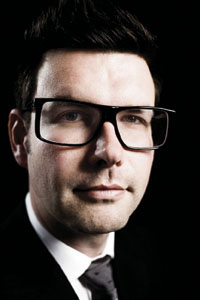Pipping the big boys to the post
Small creative groups are succeeding by putting ideas first, while large consultancies are sidetracked by process.
Small creative groups are succeeding by putting ideas first, while large consultancies are sidetracked by process.
What’s your poison? Big, globally networked design group or small creative boutique? Why would I, as a designer or a client, choose one type over another?
I was lucky enough to witness Wally Olins announce to an astonished Rodney Fitch (and a host of other designers at Design Week’s Ivy Dinner) that the golden days of the big boys were over – that we were seeing a wonderful sunrise for the boutique design group and it was ‘goodnight and God bless’ for the heaving, great beasts of design.
I wrote here a few months ago that we’d started our own small, independent communications company, so naturally I was thrilled to hear it. Full of the joys of new challenges, I looked forward to a bright, exciting future running the show our way. But a spectre haunted me. Could we, the small company, really cut it against the big boys? More importantly, would the big-boy clients believe we could?
The proof came from a pitch last week. We were asked to present credentials. A big job was in the offering. We’re small, so we assumed we were there to make them laugh (which we did). We also expected to win the job (which we did). Why? Because we were up against ‘the big boys’.
Big used to be best. It was reassuring – a safe place to experiment, as a friend in a large, global ‘hot shop’ once told me. But, driven by profits and growth, if compromise is the way to do it, down the path of least resistance they will slide. Great work is never at the end of this slippery slope.
When we started SomeOne, we asked around for tips on what to do and what to avoid. ‘Just do good work’, said Thomas Manss of Manss & Co over lunch. Airside’s Fred Deakin echoed this – ‘Do crap, get more crap’. Nicely said. ‘People call because they have seen and love what we’ve done,’ said Amelia Noble of Kerr Noble. There’s a clear theme here. Its all about the end result – the design, stupid.
So, why are the big boys so obsessed with process? Olins thinks it’s due to a need to feel accepted by marketing directors, to justify our intangible offering – ideas. But he also described how the process has become more important than the design work.
We won last week’s pitch for a simple reason. We put creativity at the heart of the process. We showed – we didn’t just tell. We did stuff, unique stuff, just for the meeting. We didn’t just roll out the same old ‘global’ foam boards. We didn’t do design work, but we were, horror of horrors, ‘creative’.
‘Endless process’ is how our new, big client described the largest design group in the running. What a damning statement. ‘No creative work’ was another cracker. Clearly, clients don’t get excited about process. More to the point, why would a creative industry pride itself on process?
It set us thinking. The last nine clients we’ve won have all come to us for creativity. Not one has leapt at the chance of going over another timing plan. That’s not to say we don’t do them – we like to know what goes where and when – but I can’t say its something that makes brilliant minds want to work with us. The magnet is the work. The approach, the fun, the fact that we laugh a lot and enjoy ourselves in and out of meetings. There’s an ad agency in Amsterdam that has a welcome mat that says, ‘Smile, it’s meant to be a fun business’. This appears to be something companies in a global network forget.
Big has its place in the market, but it appears that it’s place is no longer on top. Setting up a design group is now easier than ever. You don’t need a fortune to spend on equipment, and you don’t need the big, flashy office in Soho. You need great ideas, a laptop and people who want to pay to work with you.
This all leads me to another question. Why do designers work in design consultancies run by people who are not designers? Is it because they believe they can’t do without them? If so, I’m here to remind designers that they are one of the most compelling reasons clients employ design groups. It’s why some of us are out here, in independent groups, putting big ideas first and beating the big boys.

Simon Manchipp is co-founder of SomeOne
Why clients prefer boutique communications groups
• Personal, caring, concierge-style service that is fast and creative
• Meeting and working directly with the designer, not his accountant
• Greater value for money (not to be confused with being cheaper than bigger groups)
• A consultancy that designs, rather than talks about design
• Most of all, they are creatively led, not process-led
-
Post a comment




